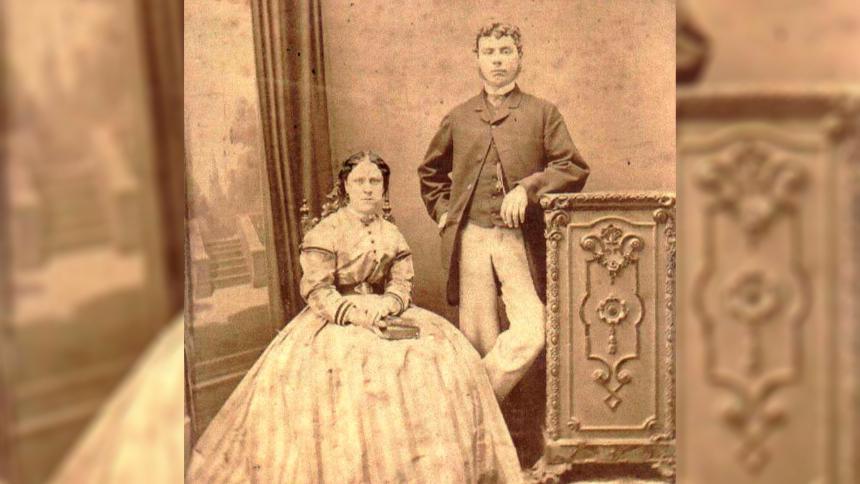
Annie Chapman: Jack the Ripper's second victim
Annie Chapman was a woman in Victorian London known for being the second victim of the infamous serial killer Jack the Ripper.
Much like the Ripper's first victim – Mary Ann Nichols – Chapman’s death was highly publicised and continues to be so.
Annie's murder – like the deaths of the Ripper’s other victims – was a media spectacle due to their gruesome nature. However, their deaths are remembered today as a testament to the hardships of impoverished women in the Victorian era.
Here at Crime+Investigation, we’re going to be looking more closely at the life and brutal death of Annie Chapman to see how her vulnerability made her a target for one of the most famous murderers in criminal history.
The life of Annie Chapman
Annie Chapman was born Eliza Ann Smith in Paddington, London, on 25th September 1840. She was born to parents Ruth Chapman and George Smith and was the eldest of five children.
Accounts describe Annie as a sociable and intelligent woman, though she had a weakness for alcohol that began at a young age. She was particularly fond of rum and continued to drink despite her siblings attempting to stop her numerous times.
However, by 1880, Chapman had reportedly managed to wean herself off the alcohol.
Annie Chapman’s marriage and children
Annie married a relative of her mother – John James Chapman – in May 1869 when she was 28 years old. The couple had three children together: Emily Ruth (born 1870), Annie Georgina (born 1873), and John Alfred (born 1880).
They faced a fair amount of tragedy with their children. John was born handicapped, and his parents had to have him placed in an institution for the physically disabled.
The heartache did not stop there. On 21st November 1882 – on their son's second birthday – their eldest daughter Emily Ruth passed away from meningitis.
This tragedy caused both Annie and John to start drinking heavily. Annie would go on to be arrested for public intoxication on several occasions.
The separation of Annie and John Chapman
Annie and John agreed to a separation in 1884, with John obtaining custody of their surviving daughter. The family had been living in Windsor, but Annie returned to London after the separation. Two years after the separation, John Chapman died of edema and liver cirrhosis.
Annie’s life after separation
Annie lived in Whitechapel after her separation, living off of a weekly allowance given by John. She moved around various lodging houses in Spitalfields and Whitechapel.
She took to sex work following the death of her husband, likely due to a lack of money. She also made some money from other work, such as selling flowers and crocheting.
The murder of Annie Chapman
Annie was staying at Crossingham's Lodging in Spitalfields on the night of 7th September 1888. Annie left the lodging at 1:30am in the early hours of the following morning.
According to testimony at the inquest of her murder, she was seen at 5:30am talking to a man. If this is truly the case, Annie was likely last seen talking to her murderer.
Shortly before 6am on 8th September, Annie’s body was found by a man named John Davis. Her body was discovered in the backyard of his property on 29 Hanbury Street.
As with Mary Ann Nichols, Annie Chapman’s murder was particularly brutal. Her throat was cut deeply with two incisions. Major blood vessels and her windpipe were severed.
Her abdomen had been sliced open and some of her organs – including part of her bladder and her uterus – had been removed. Annie’s clothes were also pulled up so that her injuries were on full display.
The investigation
Due to the striking similarities between Annie’s and Mary Ann Nichols’s murder, police intensified their efforts to catch the culprit.
The investigation was managed by Inspector Joseph Chandler. Divisional police surgeon Dr George Bagster Phillips examined the body. He instantly recognised the similarities and precision of Annie and Mary Ann’s injuries.
As we all know, the killer of Annie Chapman and the other victims was never found. The vicious method by which the victims were killed has made this case stand out in crime history.
The tragedy of Annie Chapman’s life – from the loss of her daughter to her alcohol abuse and casual prostitution – highlights the struggles that many Victorian women faced.
Want to know more about some of the most famous crimes in history? Stay up to date with everything you need to know with the Crime+Investigation newsletter!












